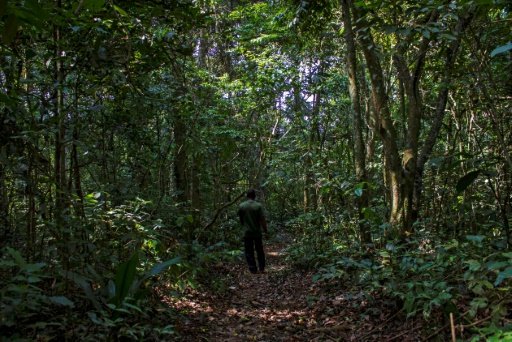
An innovative program to pay Ugandan villagers not to cut down trees shows promise in cutting back carbon emissions, researchers say -AFP photo
MIAMI: Paying small amounts of cash to convince landowners not to cut down their trees is a highly effective strategy for reducing carbon emissions that drive climate change, researchers said Thursday.
Trees are important because they absorb lots of carbon dioxide, which is a by-product of fossil fuel burning and is the primary of driver of global warming.
The analysis of a system called “Payments for Ecosystems” in Uganda showed its benefits to the environment were 2.4 times as large as the program costs, said the study in the journal Science.
“The payments changed people’s behavior and prompted them to conserve,” said lead author Seema Jayachandran, associate professor of economics in the Weinberg College of Arts and Sciences at Northwestern University.
“And we didn’t find any evidence that they simply shifted their tree-cutting elsewhere.”
The two-year study in western Uganda examined the impact of offering landowners 70,000 Ugandan shillings ($28 in 2012 U.S. dollars) per year for each hectare (2.5 acres) of forest in which they left trees unperturbed.
Sixty villages were randomly selected to receive incentives, and 61 were not offered any cash to save the trees.
Satellite data was analyzed to measure tree cover, and forest monitors conducted spot checks on enrollees’ land to hunt for any sign of recent tree-clearing.
“In the villages without the program, nine percent of the tree cover that was in place at the start of the study was gone by the end of it, two years later,” said Jayachandran.
“In the villages with the PES program, there was four to five percent tree loss. In other words, there was still deforestation, but much less of it.”
– Cost-effective –
Forests in Uganda provide precious habitat for endangered chimpanzees.
Between 2005 and 2010 Uganda had one of the highest rates of deforestation in the world, with 2.7 percent lost per year, according to background information in the article.
A full 70 percent of forests in Uganda are located on private land, where poor farmers cut them for timber. Cleared land is also used to grow crops.
After the study, villages offered the incentive preserved 13.5 more acres (5.5 more hectares) of forest than villages in the comparison group.
“This equates to 3,000 metric tons of carbon dioxide not released into the atmosphere, at a total cost of just 46 cents per ton not released over the two years of the study,” said the report.
Because the amounts of money involved are fairly small, and because most deforestation today occurs in low-income countries, researchers said the savings can be big.
Paying farmers to conserve and plant trees was an estimated 10 to 50 times more effective per dollar spent than many energy efficiency programs in the United States, the study found.
“This is the first experimental study of its kind to show not just how effective, but how cost-effective, programs like this can be,” said Annie Duflo, executive director of Innovations for Poverty Action.
“Good science like this helps us understand how to combat climate change and preserve endangered habitats, while also helping poor farmers.” -AFP
